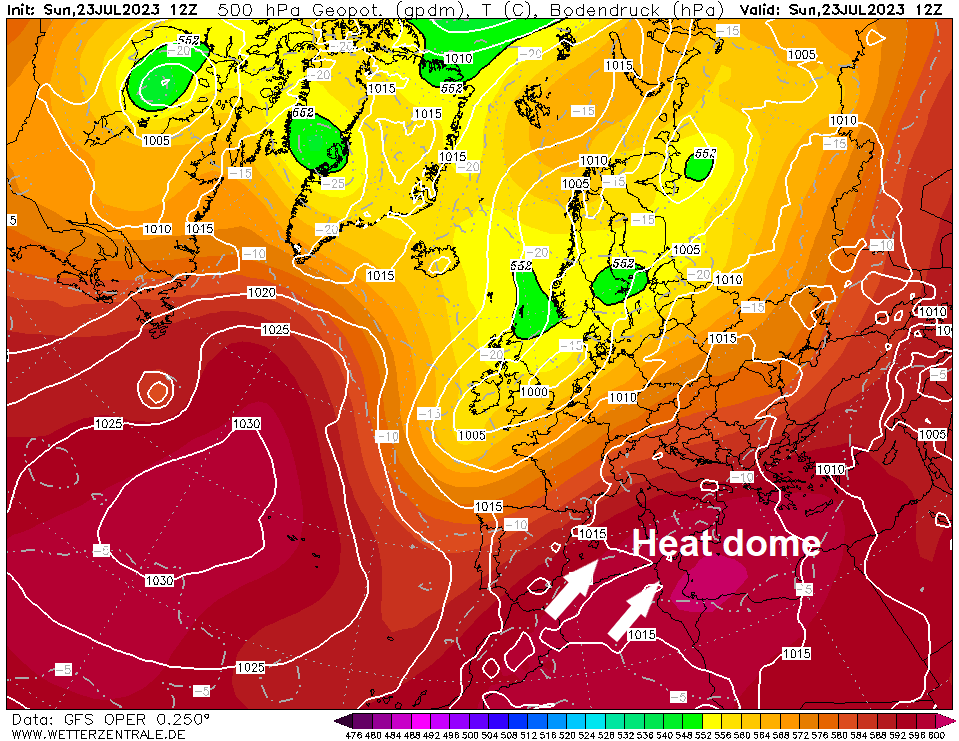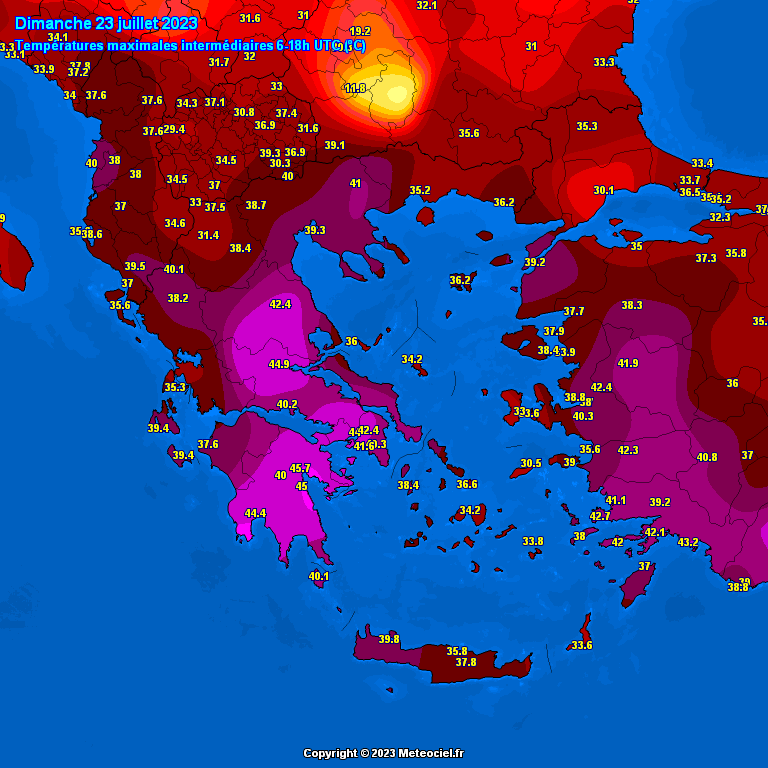
As yet another Greek island popular with tourists, Corfu, sees a wildfire spread, we look at the situation here and across the rest of southern Europe and how long the dry and extremely hot conditions will last.
Wildfires on Rhodes on have led to the evacuation of 1000s of tourists on the island, but the problem of wildfires is not just isolated to this Greek Island. There were 82 wildfires burning across Greece on Sunday, 64 of which started yesterday. Dry ground vegetation, searing temperatures exceeding 40C over recent days, low humidity coupled with high winds are helping fan over 60 forest fires across Greece. Corfu island, another popular tourist destination, in the northwest of Greece, in the Ionian Sea, some 600 miles away from Rhodes – is the latest victim to see a wildfire develop, which is spreading across the island Sunday evening, with evacuations underway. Also Evia, Greece's second largest island, is seeing wildfires spread.
Wildfires are not unusual in Greece along with the whole of the Mediterranean and often play an important role in maintaining shrublands and dry forest ecosystems in the region. But hotter, drier and windier summers have brought more of them in recent years. Climate change means heatwaves will become more frequent.
In 2021, wildfires destroyed the northern half of the Greek island of Evia, northeast of Athens, following Greece’s longest heatwave to date. In the summer of that year, drought and low humidity combined with record-breaking heat of up to 48.8°C led to wildfire outbreaks across Mediterranean countries, including Italy, Greece, Algeria and Turkey - killing more than 100 people and burning more than 620,000 ha of land in July and August. The intensity of these fires was unprecedented.
Like this summer so far, wildfires in 2021 summer occurred under conditions of extreme heat and drought. Since mid-July this year, a heat dome, building in from NW Africa, has brought extreme heat across southern Europe.
A heat dome occurs when an area of high pressure in the upper atmosphere traps hot air underneath it, increasing temperatures until it dissipates. Warmed by solar radiation, the air expands into the atmosphere as the area of high pressure pushes the warm air down. As the air is pushed down, it compresses and heats up, trapping even more heat underneath. The high-pressure dome keeps clouds and wind at bay, increasing the heat.


This heat domes this month and in the last 2 summers had their origins in hot air from the Sahara being pulled in across the Mediterranean and other parts of Europe by low pressure over the northeast Atlantic, this traps the southern high-pressure zone in place and allows temperatures to spiral while pulling in hot air from NW Africa.
Temperatures in summer 2021 like this month were exceptionally high; on August 11, 2021 - Syracuse, Sicily, set a new temperature record for Europe at 48.8°C, breaking the previous record of 48.0°C set in Athens in 1977. The heatwave lasted for over two weeks in Italy, Greece and Turkey, and continued for over a month in parts of northern Africa
The current heatwave in Greece is set to become the longest in the country's recorded history, according to a senior official with the national weather institute – who has suggested the country will probably go through 16-17 days of a heatwave, which has never happened before in the country
Temperatures have risen well above 40 Celsius over large parts of Greece over the weekend, the highest temperature on Sunday reached 45.7C at Pyrgela in southern Greece, the high temperatures could make it the hottest July weekend in half a century.

Elsewhere across southern Europe, Rome reached 42C (108F) on Tuesday, beating the previous record by 1C. While the Sardinia recorded 46.2 degrees and Sicily recorded 44.8C on Wednesday.
Temperatrures in the 40s next few days over southern Italy, Greece and Turkey, the heat easing from the west through the week, but extreme temperatures hanging on across Greece:

The very hot and dry conditions over the Mediterranean are expected to continue, though recent high temperatures of over 40C in parts of Spain will ease a little this coming week, but it will still remain hot in the mid to high 30s in the south. The core of the highest temperatures will be focused over Italy, the Balkans, Greece and Turkey over the coming few days – with temperatures reaching the low to mid 40s over southern Italy, Greece and Turkey. These very high temperatures easing from the west through the week though. But with little or no rain forecast – wildfires will continue to burn or expand in these areas. So, there is a risk that some of these fires make get close to popular holiday destinations and affect holidaymakers – as we’ve seen on Rhodes.
Current fires and risk of wildfire in Europe - European Forest Fire information Service (EFFIS)
Southwest US also in the grip of a long-lived heatwave.
The southwest of USA is also sweltering with temperatures of 41C and above this weekend, according to the National Weather Service (NWS).
In Phoenix, Arizona temperatures of up to 46 degrees have been forecast and follows a record-breaking three weeks in a row of highs above 43C (110F). The ongoing heat wave in Phoenix has been the most intense one the city has experienced since records began in 1895. The Valley of the Sun has sweltered under temperatures of 43C or higher for 23 consecutive days and counting. The old record streak of 18 days at or above a high temperature of 110 degrees, set in 1974, was broken Tuesday, July 18, when temperatures met the benchmark around noon.